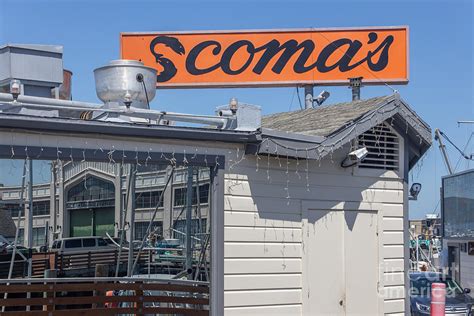
After a century of serving seafood on Fisherman’s Wharf, Scoma’s, a San Francisco culinary institution, is closing its doors, marking the end of an era for the iconic waterfront restaurant. The closure, prompted by the Port of San Francisco’s decision to seek new vendors for the space, has triggered a wave of nostalgia and reflection on the restaurant’s significant contribution to the city’s cultural and gastronomic landscape.
Scoma’s, known for its classic seafood dishes and waterfront views, officially ceased operations on Sunday, June 16, 2024. The restaurant, which has been a fixture at Pier 47 since 1965, faced increasing challenges in recent years, including rising costs, declining tourism, and the protracted impacts of the COVID-19 pandemic. However, the ultimate catalyst for the closure was the Port’s decision not to renew the lease, opting instead to solicit proposals for a new restaurant concept that aligns with the evolving needs of Fisherman’s Wharf.
The Port of San Francisco, responsible for managing the city’s waterfront properties, initiated a request for proposals (RFP) process, seeking innovative dining experiences that would revitalize the area and attract a broader demographic. While Scoma’s was welcome to submit a proposal, the family-owned business decided against it, citing concerns about the feasibility of meeting the Port’s requirements and the uncertainty surrounding the future of Fisherman’s Wharf.
“While we respect the Port’s decision, we felt that the terms of the RFP were not conducive to our long-term vision for Scoma’s,” said Tom Scoma, the third-generation owner of the restaurant. “We believe that Fisherman’s Wharf needs a comprehensive revitalization plan, and we hope that the Port’s new direction will bring positive change to the area.”
Scoma’s history dates back to 1916 when immigrants Alfredo Scoma and Francesco Riccobono started a modest coffee shop in the heart of Fisherman’s Wharf. Initially catering to the area’s Italian-American fishing community, the establishment gradually evolved into a full-fledged seafood restaurant, renowned for its fresh catches and traditional recipes. Over the decades, Scoma’s became a beloved destination for locals and tourists alike, attracting celebrities, dignitaries, and generations of families seeking an authentic San Francisco dining experience.
“Scoma’s was more than just a restaurant; it was a part of San Francisco’s identity,” said Mayor London Breed in a statement. “Its closure marks the end of an era, but its legacy will live on in the memories of all those who have dined there over the years.”
The restaurant’s signature dishes, such as the “Lazy Man’s Cioppino” and the “Crab Cakes,” became synonymous with San Francisco seafood cuisine. Scoma’s commitment to sourcing the freshest ingredients and maintaining high culinary standards earned it numerous accolades and a loyal following. The restaurant’s ambiance, characterized by its nautical décor, bustling atmosphere, and panoramic views of the bay, further contributed to its unique appeal.
“We are incredibly grateful for the support of our customers, employees, and the San Francisco community over the past century,” said Scoma. “Their loyalty and passion have made Scoma’s what it is today, and we will cherish the memories we have created together.”
As Scoma’s bids farewell, the future of its iconic location remains uncertain. The Port of San Francisco is expected to announce the winning proposal for the space in the coming months, with plans to introduce a new dining concept that will complement the revitalized Fisherman’s Wharf. While the closure of Scoma’s represents a loss for the city’s culinary heritage, it also presents an opportunity for innovation and renewal, paving the way for a new chapter in the history of San Francisco’s waterfront.
The closure also raises broader questions about the future of Fisherman’s Wharf, which has faced challenges in recent years due to declining tourism, changing consumer preferences, and increased competition from other dining destinations. The Port of San Francisco is actively working to address these issues through a comprehensive revitalization plan that includes infrastructure improvements, enhanced public spaces, and the introduction of new attractions and amenities.
“We recognize the importance of Fisherman’s Wharf as a vital economic engine and a cultural landmark,” said Elaine Forbes, Executive Director of the Port of San Francisco. “We are committed to working with the community to create a vibrant and sustainable future for the area, ensuring that it remains a premier destination for generations to come.”
The legacy of Scoma’s will undoubtedly endure, not only through the memories of its patrons but also through its lasting impact on San Francisco’s culinary scene. The restaurant’s commitment to quality, tradition, and community will serve as an inspiration for future generations of restaurateurs, reminding them of the importance of preserving the city’s unique character and culinary heritage.
As the doors of Scoma’s close for the final time, San Francisco reflects on a century of seafood, memories, and the enduring legacy of a restaurant that helped define the city’s identity. The waterfront will undoubtedly change, but the taste of Scoma’s, and the stories it holds, will linger long after the last plate has been cleared.
Detailed Analysis and Expanded Context:
The closure of Scoma’s is a multifaceted event, driven by a combination of economic pressures, shifting urban dynamics, and the strategic decisions of the Port of San Francisco. Understanding these factors provides a more comprehensive view of the restaurant’s departure and its implications for Fisherman’s Wharf and the city as a whole.
Economic Pressures and Shifting Urban Dynamics:
San Francisco’s restaurant industry has faced significant challenges in recent years, including rising rents, labor costs, and food prices. These economic pressures have made it increasingly difficult for restaurants, particularly those with large footprints and high overhead, to remain profitable.
Additionally, changing consumer preferences and the rise of new dining destinations have created increased competition for established restaurants like Scoma’s. Younger generations of diners often seek out innovative culinary experiences and trendy restaurants, which can draw business away from traditional establishments.
The COVID-19 pandemic exacerbated these challenges, leading to a significant decline in tourism and a shift towards takeout and delivery services. While Scoma’s adapted to these changes, the long-term impact of the pandemic on the restaurant industry remains a concern.
The Port of San Francisco’s Strategic Vision:
The Port of San Francisco plays a crucial role in managing the city’s waterfront properties and ensuring their economic viability. The Port’s decision to seek new vendors for the Scoma’s location reflects its strategic vision for revitalizing Fisherman’s Wharf and attracting a broader range of visitors.
The Port’s request for proposals (RFP) process emphasized innovation, sustainability, and community engagement, signaling a desire for dining concepts that align with the evolving needs of the area. While Scoma’s was welcome to submit a proposal, the family-owned business ultimately decided against it, citing concerns about the feasibility of meeting the Port’s requirements and the uncertainty surrounding the future of Fisherman’s Wharf.
The Port’s decision has generated debate within the community, with some residents expressing concern about the loss of a beloved institution, while others support the Port’s efforts to modernize Fisherman’s Wharf and attract new businesses.
Scoma’s Legacy and Impact on San Francisco:
Scoma’s legacy extends far beyond its menu and waterfront location. The restaurant has played a significant role in shaping San Francisco’s culinary identity and promoting the city’s seafood industry. Its commitment to quality, tradition, and community has earned it a loyal following and numerous accolades.
Scoma’s closure represents a loss for San Francisco’s cultural heritage, but it also presents an opportunity for reflection on the city’s past and future. As the city evolves and adapts to changing economic and social conditions, it is important to preserve its unique character and culinary traditions.
The Future of Fisherman’s Wharf:
The closure of Scoma’s underscores the need for a comprehensive revitalization plan for Fisherman’s Wharf. The Port of San Francisco is actively working to address this issue through infrastructure improvements, enhanced public spaces, and the introduction of new attractions and amenities.
The Port’s vision for Fisherman’s Wharf includes creating a more vibrant and sustainable destination that caters to a diverse range of visitors. This includes attracting new businesses, promoting local arts and culture, and enhancing the waterfront experience.
The future of Fisherman’s Wharf will depend on the collaboration of the Port, local businesses, and the community. By working together, they can create a thriving waterfront that honors the city’s past while embracing its future.
Quotes:
- “While we respect the Port’s decision, we felt that the terms of the RFP were not conducive to our long-term vision for Scoma’s,” said Tom Scoma, the third-generation owner of the restaurant. “We believe that Fisherman’s Wharf needs a comprehensive revitalization plan, and we hope that the Port’s new direction will bring positive change to the area.”
- “Scoma’s was more than just a restaurant; it was a part of San Francisco’s identity,” said Mayor London Breed in a statement. “Its closure marks the end of an era, but its legacy will live on in the memories of all those who have dined there over the years.”
- “We are incredibly grateful for the support of our customers, employees, and the San Francisco community over the past century,” said Scoma. “Their loyalty and passion have made Scoma’s what it is today, and we will cherish the memories we have created together.”
- “We recognize the importance of Fisherman’s Wharf as a vital economic engine and a cultural landmark,” said Elaine Forbes, Executive Director of the Port of San Francisco. “We are committed to working with the community to create a vibrant and sustainable future for the area, ensuring that it remains a premier destination for generations to come.”
FAQ:
1. Why did Scoma’s close after being at Fisherman’s Wharf for so long?
Scoma’s closed primarily due to the Port of San Francisco’s decision to seek new vendors for the space at Pier 47. The Port initiated a request for proposals (RFP) process, looking for dining concepts that would revitalize Fisherman’s Wharf. While Scoma’s could have submitted a proposal, the family-owned business decided not to, citing concerns about the feasibility of meeting the Port’s requirements and the uncertainty surrounding the future of Fisherman’s Wharf. Other factors contributing to the closure included rising costs, declining tourism, and the lingering impacts of the COVID-19 pandemic.
2. What will happen to the Scoma’s location at Pier 47?
The Port of San Francisco will review proposals from potential new vendors for the Pier 47 location. They are looking for a dining concept that aligns with their vision for a revitalized Fisherman’s Wharf, one that offers innovation, sustainability, and community engagement. The Port is expected to announce the winning proposal in the coming months, and a new restaurant will eventually occupy the space.
3. What was Scoma’s known for?
Scoma’s was renowned for its classic seafood dishes, fresh catches, and traditional recipes. Signature dishes like the “Lazy Man’s Cioppino” and the “Crab Cakes” were particularly popular. The restaurant was also known for its nautical décor, bustling atmosphere, and panoramic views of the bay, which contributed to its unique and authentic San Francisco dining experience. Its commitment to quality ingredients and consistent culinary standards earned it a loyal following of locals and tourists.
4. What is the Port of San Francisco’s plan for Fisherman’s Wharf?
The Port of San Francisco is implementing a comprehensive revitalization plan for Fisherman’s Wharf. This plan includes infrastructure improvements, enhanced public spaces, and the introduction of new attractions and amenities. The Port aims to create a more vibrant and sustainable destination that caters to a diverse range of visitors. This involves attracting new businesses, promoting local arts and culture, and enhancing the overall waterfront experience, ensuring Fisherman’s Wharf remains a premier destination for future generations.
5. Will the Scoma’s brand continue in any form?
As of the closure of the Fisherman’s Wharf location, there have been no public announcements regarding the future of the Scoma’s brand. It remains uncertain whether the Scoma family will seek to open a new restaurant in a different location or explore other avenues to preserve the legacy of the brand. However, the recipes, memories, and the impact Scoma’s had on San Francisco’s culinary scene will undoubtedly endure. The Scoma family’s commitment to quality, tradition, and community will likely serve as an inspiration for future generations of restaurateurs.
Additional Details and Considerations:
-
The Historical Context of Fisherman’s Wharf: Understanding the historical evolution of Fisherman’s Wharf provides context to the significance of Scoma’s closure. Initially a hub for Italian-American fishermen, the area transformed into a tourist destination in the mid-20th century. Scoma’s played a pivotal role in this transformation, catering to both locals and tourists alike. The restaurant’s closure highlights the ongoing changes and challenges facing Fisherman’s Wharf as it seeks to adapt to modern demands.
-
The Impact on Scoma’s Employees: The closure of Scoma’s had a significant impact on its employees, many of whom had worked at the restaurant for decades. The Scoma family expressed gratitude for their employees’ dedication and loyalty, and provided assistance to help them find new employment opportunities. The closure underscores the human cost of economic change and the importance of supporting workers during times of transition.
-
The Role of Family-Owned Businesses in San Francisco: Scoma’s was a family-owned business that played a vital role in San Francisco’s economy and culture. The closure highlights the challenges facing family-owned businesses in a rapidly changing urban environment. The city’s high cost of living, strict regulations, and increased competition from large corporations make it difficult for small businesses to thrive. Preserving family-owned businesses is essential for maintaining San Francisco’s unique character and ensuring its economic diversity.
-
The Debate Over Development and Preservation: The closure of Scoma’s has sparked a debate over the balance between development and preservation in San Francisco. Some argue that the city needs to embrace change and innovation to remain competitive, while others believe that it is important to protect its historical landmarks and cultural institutions. Finding a balance between these competing priorities is essential for ensuring San Francisco’s long-term sustainability and preserving its unique identity.
-
The Future of San Francisco’s Culinary Scene: The closure of Scoma’s raises questions about the future of San Francisco’s culinary scene. While the city continues to attract talented chefs and innovative restaurants, it also faces challenges such as rising costs and increased competition. Supporting local restaurants and preserving the city’s culinary traditions is essential for maintaining San Francisco’s reputation as a world-class dining destination.
-
Community Reaction and Memorials: The outpouring of community support and nostalgia following Scoma’s closure demonstrated the restaurant’s deep connection to San Francisco. Many residents shared memories of dining at Scoma’s with family and friends, highlighting its role as a gathering place and a symbol of the city’s identity. Some residents have proposed creating a memorial or historical marker to commemorate Scoma’s legacy and its contribution to San Francisco’s culinary heritage.
-
The Long-Term Vision for Fisherman’s Wharf: The Port of San Francisco’s long-term vision for Fisherman’s Wharf extends beyond simply replacing Scoma’s with a new restaurant. The Port aims to create a more vibrant and sustainable waterfront that attracts a diverse range of visitors and supports local businesses. This includes improving infrastructure, enhancing public spaces, and promoting cultural attractions. The Port’s success in achieving this vision will depend on its ability to collaborate with the community and create a shared sense of purpose.
-
The Economic Impact of Tourism on Fisherman’s Wharf: Tourism plays a significant role in the economic viability of Fisherman’s Wharf. The decline in tourism in recent years, due to factors such as the COVID-19 pandemic and increased competition from other destinations, has had a negative impact on businesses in the area. The Port of San Francisco is working to attract more tourists to Fisherman’s Wharf by promoting its unique attractions and experiences, such as its seafood restaurants, historical sites, and waterfront views.
-
The Importance of Public-Private Partnerships: The revitalization of Fisherman’s Wharf will require strong public-private partnerships. The Port of San Francisco is working with local businesses, community organizations, and private developers to create a shared vision for the area and implement projects that benefit the entire community. Effective public-private partnerships can leverage the resources and expertise of both sectors to create sustainable and successful outcomes.
-
The Role of Sustainability in the Future of Fisherman’s Wharf: Sustainability is becoming increasingly important in the development of Fisherman’s Wharf. The Port of San Francisco is committed to promoting environmentally friendly practices, such as reducing waste, conserving energy, and protecting marine resources. New businesses and development projects in the area are expected to adhere to sustainable design principles and contribute to the overall environmental health of Fisherman’s Wharf.
By examining these additional details and considerations, a more thorough understanding of the closure of Scoma’s and its implications for San Francisco can be achieved. The event serves as a reminder of the importance of preserving the city’s unique character and culinary traditions while also embracing change and innovation. The future of Fisherman’s Wharf will depend on the collaboration of the Port, local businesses, and the community in creating a vibrant and sustainable waterfront that honors the city’s past while embracing its future. The legacy of Scoma’s, though concluded at Pier 47, will continue to be a part of San Francisco’s rich tapestry.









